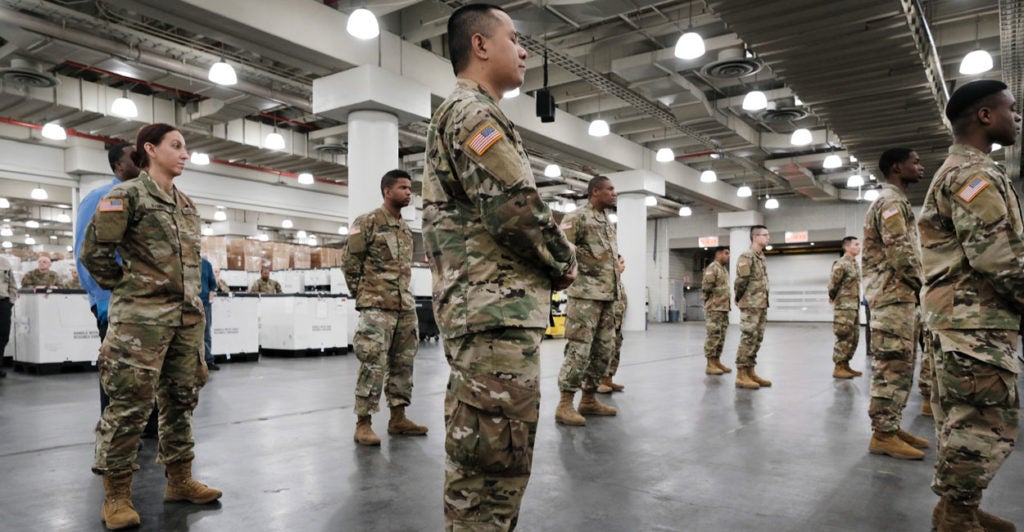During the daily White House briefing yesterday on the government’s responses to the COVID-19 coronavirus pandemic, President Donald Trump announced that he had signed an executive order that directed the federal government to fund 100% of the costs incurred by New York, California, and Washington state in connection with their use of their National Guard units.
Those three states have been particularly hard-hit. New York currently accounts for roughly 50% of COVID-19 cases in the United States.
As one of us wrote in a Wall Street Journal op-ed last week, there are a variety of measures the states can undertake, pursuant to their state constitutions, to confront the virus and keep their residents safe.
The states have police power (unlike the federal government), and state governors are charged with protecting the health, safety, and general welfare of their residents.
Governors have the legal authority to order quarantines, issue isolation and shelter-in-place orders, and other such restraints on civil liberty during a time of crisis, such as the COVID-19 epidemic, as long as those orders are based on a demonstrable threat to public safety, including a serious health crisis.
Each state also has a state-based militia, called a National Guard. A governor is the “commander in chief” of his or her state’s National Guard. They have the authority to activate or “call up” those units to help quell disasters, such as fires, natural disasters, public health emergencies, or other major threats to peace and security in their state.
Each state’s constitution and state statutes delineate the rules related to the appropriate utilization of a state’s National Guard.
In support of efforts to contain the coronavirus outbreak, a governor can activate that state’s National Guard units to help with the delivery of much-needed medical supplies or other logistical requirements, such as protecting state property or critical supply lines, or assembling and manning temporary hospitals.
Typically, when a governor calls up the National Guard, the state bears the full cost of that activation, unless the governor requests reimbursement, in whole or in part, from the federal government.
To assist New York, California, and Washington, Trump’s executive order directs the Federal Emergency Management Agency “to fund 100 percent of the emergency assistance activities associated with preventing, mitigating, and responding to the threat to public health and safety posed by the virus that these states undertake using their National Guard forces, as authorized by Sections 403 (42 U.S.C. 5170b) and 503 (42 U.S.C. 5193) of the Stafford Act.”
Title 32 of the U.S. Code contains federal laws related to the states’ National Guard. It contains the rules regulating when the president can call up state National Guard units, how they can be used, and the like. The president can also direct the federal government to reimburse a state for its use of its own National Guard, which is the case here.
As the virus spreads and the infection rate increases, more states may decide to call up their National Guard units to assist in a variety of public health tasks, including, but not limited to, providing logistical support, health care, law enforcement, and keeping the peace during this unfolding crisis.
